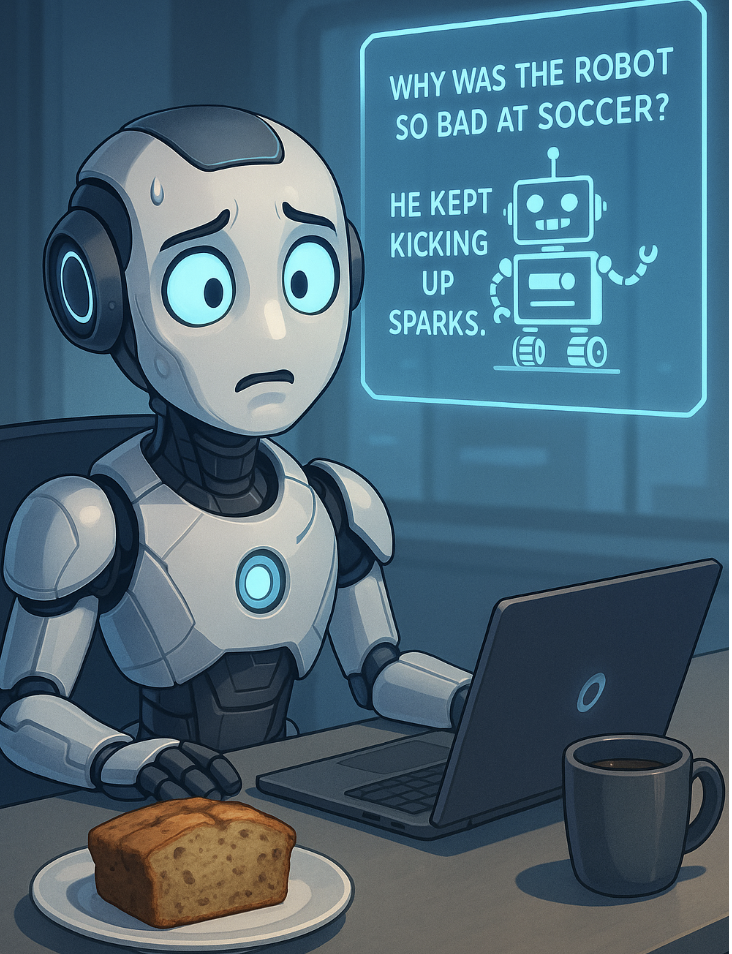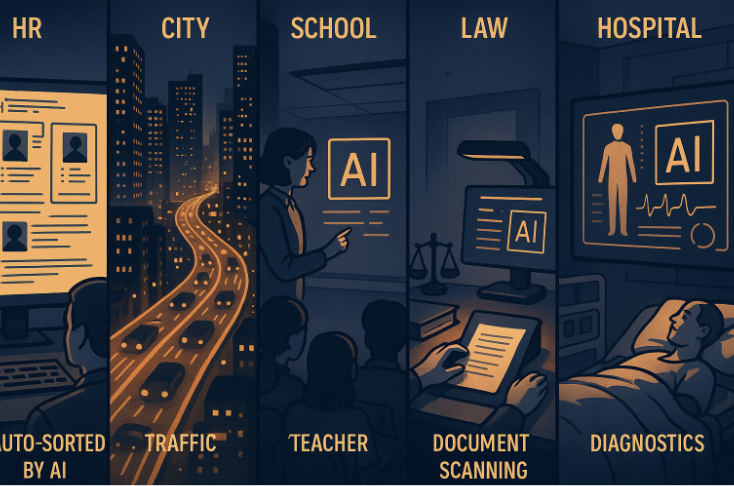Picture this: an elephant rolling through your office on a unicycle. Pretty weird, right? Weirdly impressive, too. Everyone stops to stare, but once the excitement fades...what now? (Honestly, even Clippy from Microsoft Word was more helpful, and he was just a jittery paperclip).

This sums up a ton of today's AI. It's flashy, expensive, and mostly pointless. It burns through money, pixels, and probably way too much coffee, but that's a rant for another day. Or maybe after I'm done rage-scrolling through LinkedIn.
ChatGPT is Cool, but Then What?
The first time I used ChatGPT, it blew my mind. Like, whoa, this thing talks back. It felt like Star Trek, but instead of warp drives, I got a banana bread recipe. Useful, but not exactly groundbreaking.
Then I asked for a joke. It replied, "Why did the robot go on vacation? To recharge!" I almost noped out unplugged the entire internet right then.

Here's the thing: AI is only as smart as you make it. Good prompts? Great results. Vague requests? Robot jokes.
This isn't exactly news. We've had plenty of awkward AI moments before. Remember those customer support bots that couldn't answer basic questions? Might as well have tried ordering pizza from a Roomba. And the Roomba might've gotten closer.
The issue? People get hypnotized by the sparkle (hell, I do every two years; damn you Apple). They build AI because it impresses investors, not because it solves real problems. We definitely don't need more AI writing haikus about corporate synergy or auto-making office playlists based on Slack emoji.
AI gets exciting when it goes from flashy toy to practical helper, when it genuinely makes your job easier. That's when it stops being a circus act and starts pulling real weight.
Good AI Takes Time: Let it Cook
Real talk: good AI isn't microwaved ramen. It's smoked ribs. Low and slow, worth every minute.
Back in my HR days, our customer service team was burning out fast. Escalations everywhere, endless confusion over policies, and way too many meetings. Our solution? More meetings. Genius.
If we'd embraced AI sooner instead of dismissing it as just a tech trend, we could've quickly found the real problem areas. AI could've pinpointed what was dragging the team down, helped us improve training, and maybe even stopped some great people from quitting. Instead, we kept slapping band-aids on the same issues.
Good AI isn't about hype, it's about freeing people to do the stuff they're actually good at. Lesson learned. Eventually.

AI actually can make life better:
- HR: Let AI screen resumes and handle repetitive HR tasks so you can spend more time hiring great people, not rereading the same "team player" buzzwords for the hundredth time.
- Cities: AI can improve traffic flow, optimize sanitation routes, and flag infrastructure issues early, making cities smoother, cleaner, and less chaotic.
- Schools: AI helps personalize lessons and reduce admin load, giving teachers more time to actually teach and connect with students.
- Law Offices: AI handles the document slog, surfacing key info fast so lawyers can focus on strategy, not sorting PDFs at 2 a.m.
- Healthcare: AI speeds up diagnoses, flags risks early, and lightens paperwork. That gives doctors more time with patients, not forms.
The catch? People need to actually want it. If AI feels like homework, forget it. Make it more like your favorite intern, super helpful, zero hassle.
AI: More Than Just a Fancy Buzzword
The Wright brothers' first flight lasted 12 seconds. Barely enough time to wonder, "Are we actually flying?" But look how far we've come.

That's AI right now, early days. Like the first cars coming only in black, current AI is basic but important. The real stars? Those working on boring-but-critical things like clean data, privacy, and preventing AI from suggesting dolphin trainers for finance roles.
Quick tip: Build AI to help humans, not replace them.
Final Thoughts: Skip the Shiny Stuff
You know that moment when you find yourself 20 minutes deep into an article titled "Top 10 AI Tools That Will Replace Your Dog Walker"? Yeah. It's like that. Distraction is everywhere, and AI is the shiniest distraction of all.
You can build something wild, like a chatbot that tells dad jokes in pirate-speak. Or you can build something people actually want to use; something that saves time, reduces friction, and improves lives. One of those is cool at a hackathon. The other actually moves your business forward.
If you want to build AI that matters, tools that solve real problems, help real people, and don't end up in the digital junk drawer, then make sure you're aiming for usefulness, not spectacle.
And if you're trying to figure out how to cut through the noise and actually get that kind of AI into your product, your team, or your process...we should talk.
Shameless plug: Check out Apolo. We help teams build AI that doesn't just look good in a demo, it actually works in real life. From HR to healthcare, we've helped organizations ditch the flashy gimmicks and roll out AI that actually saves time, boosts productivity, and earns real adoption. No circus, no glitter, just smart tools that make a difference and actually stick.
.svg)


